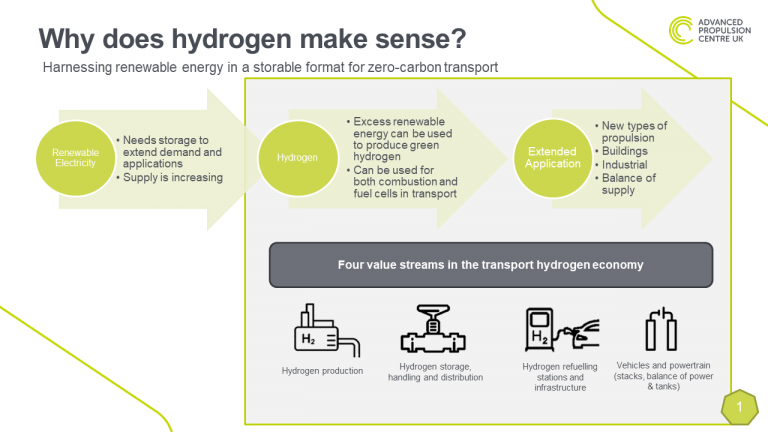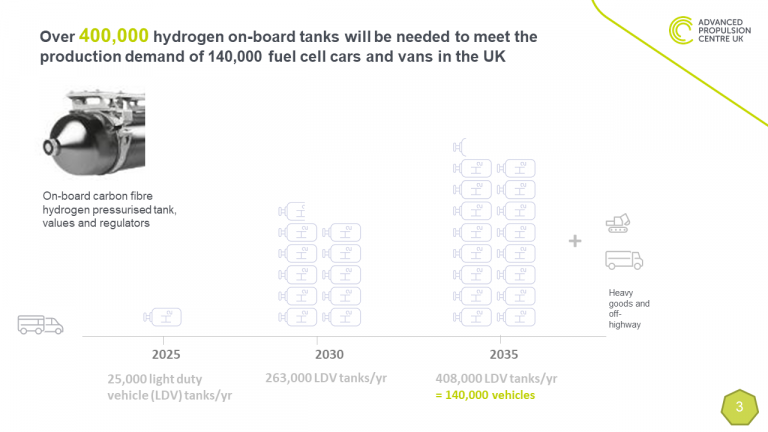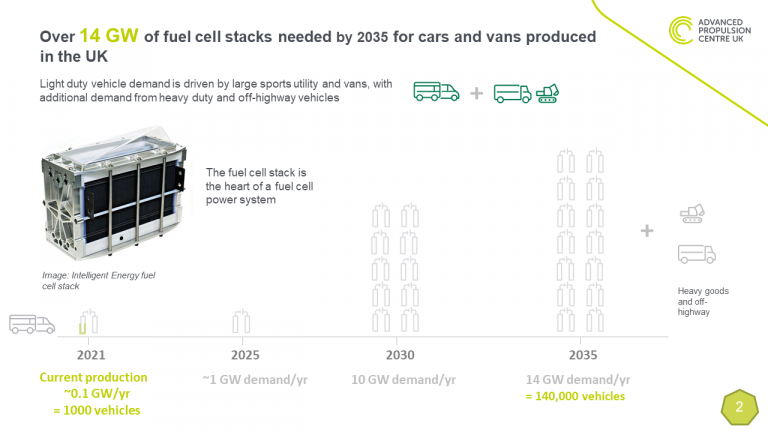How the UK Government hydrogen strategy can succeed for transport
With the publication of the UK government’s highly anticipated hydrogen strategy, the Advanced Propulsion Centre (APC) has assessed what impact hydrogen can have on accelerating zero-emissions transport and what key areas should be supported to scale up the value chain in the UK.
We are currently funding development of next-generation hydrogen-powered vehicles.
To ensure that the UK effectively transitions to the point where vehicles produce zero tailpipe emissions, we are supporting the development of a range of technologies involving hydrogen, which is necessary for converting hard-to-decarbonise transport.
For automotive, this includes long range and high-power demand vehicles like sports utility vehicles, vans, heavy goods vehicles, buses, and transport in locations without access to charging infrastructure. Other sectors include rail, air and maritime where demand for green hydrogen will rise.
Four value streams
In its strategy released on 17th August 2021, the government has committed funding for transport decarbonisaiton. Our insight has identified four key areas necessary to drive adoption of low-carbon hydrogen vehicles (see fig. 1):
- green hydrogen production,
- storage, handling, and distribution,
- refueling stations and infrastructure,
- and the continued development of vehicles and powertrains.

By addressing these so-called value streams the transport sector can benefit from a strengthened supply chain and reduced costs of green hydrogen production. This ultimately makes hydrogen combustion and fuel cell technology a more economically viable alternative to fossil fuels.
Together with the drive to replace fossil fuels in other industrial sectors and domestic heating, growing demand for clean hydrogen energy will bring costs down significantly for all.
UK supply chain and demand
The UK already has a strong supply chain to build on and is well positioned to capitalise and lead on further developing hydrogen products – and specifically green hydrogen – for use in transport.
We have mapped out production demand for fuel cell systems and on-board hydrogen tanks to produce light-duty vehicles in the UK up until 2035 (fig. 2 & 3).
The Advanced Propulsion Centre forecasts the UK will need
14 GW of fuel cell stack production and 400,000 high pressure carbon fibre tanks to meet local vehicle production demands by 2035. Equal to about 140,000 cars and vans.


There is an opportunity for large sports utility vehicles (SUVs), like the Jaguar Land Rover Defender, and commercial vans such as those made by Stellantis in Ellesmere Port, to benefit from an existing UK supply chain of raw materials and components to produce their fuel cell electric vehicles.
Our role
There is a strategic link between government and industry, is the UK’s leading organisation for developing, trialling, and supporting the industrialisation of hydrogen transport technologies. We fund several large-scale R&D projects that are laying the groundwork for the UK’s decarbonised future transport system.
Companies involved include:
- Wrightbus (fuel cells for buses)
- Jaguar Land Rover Project Zeus (SUV fuel cell demonstrator)
- Intelligent Energy (scale-up of proton exchange membrane [PEM] fuel cell production)
- Arcola (integrating fuel cells in HGVs)
We play an important role in providing insight on what the current and future picture looks like for hydrogen in the UK and how it is benefitting the drive to net zero.